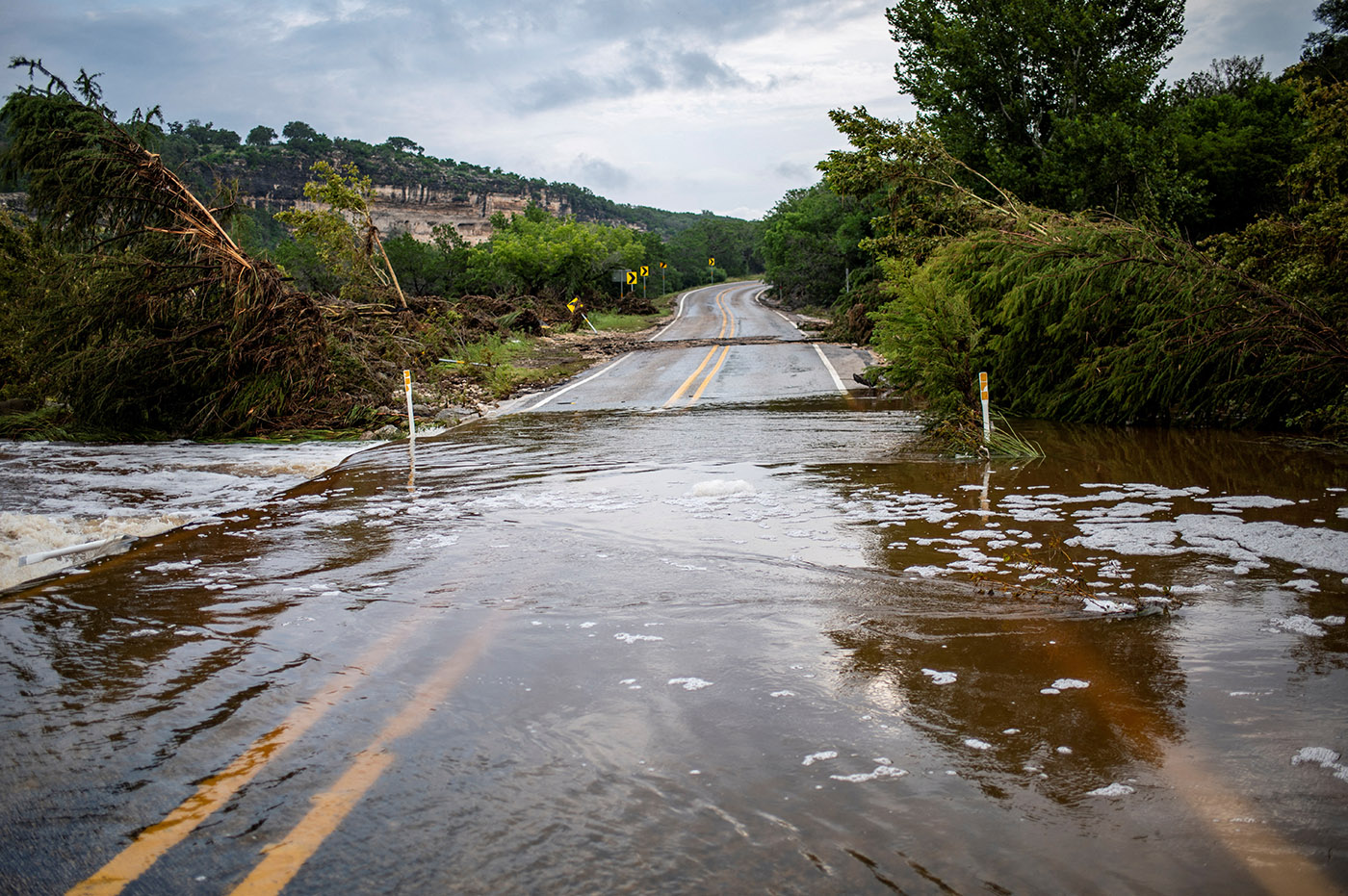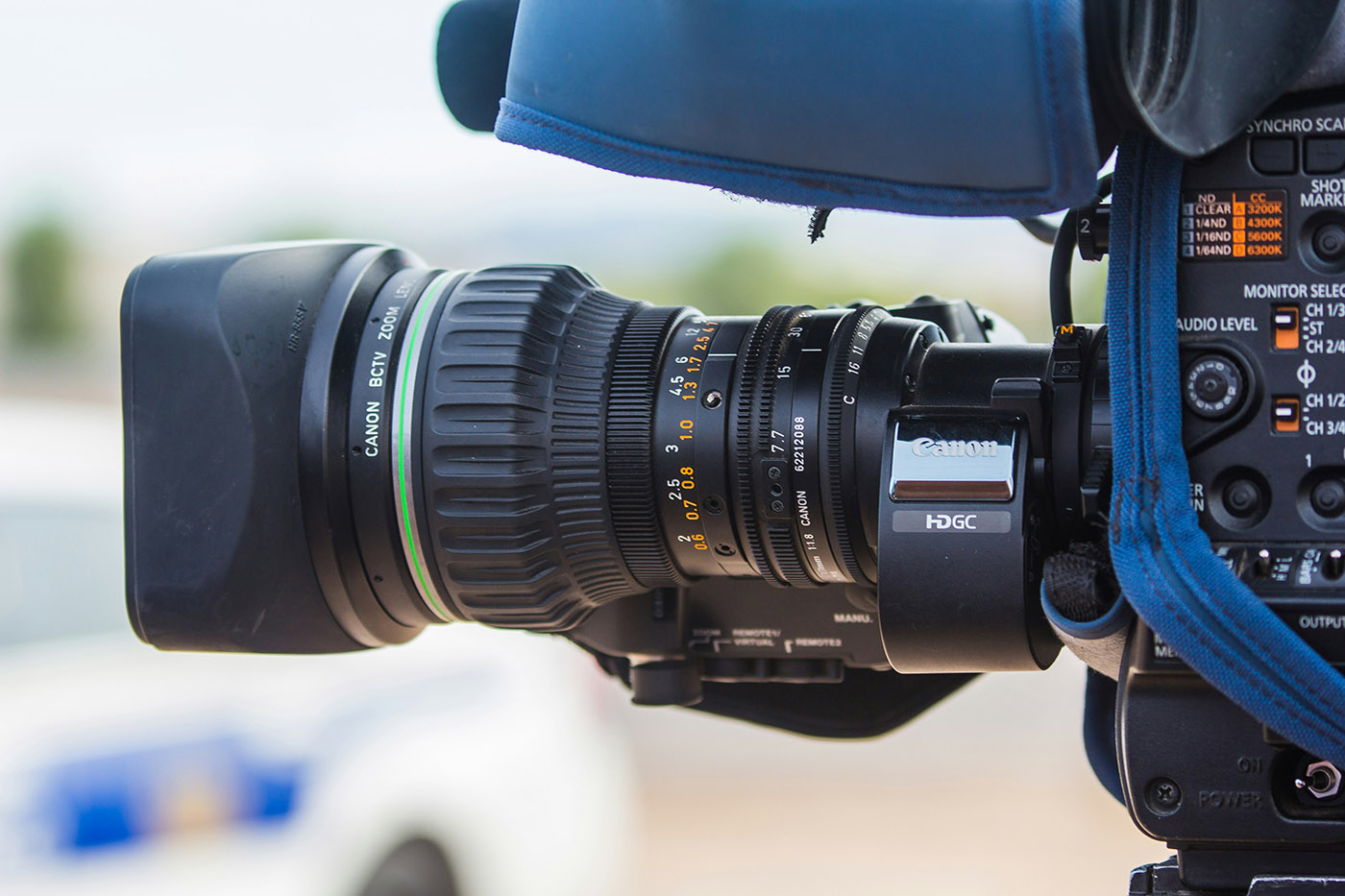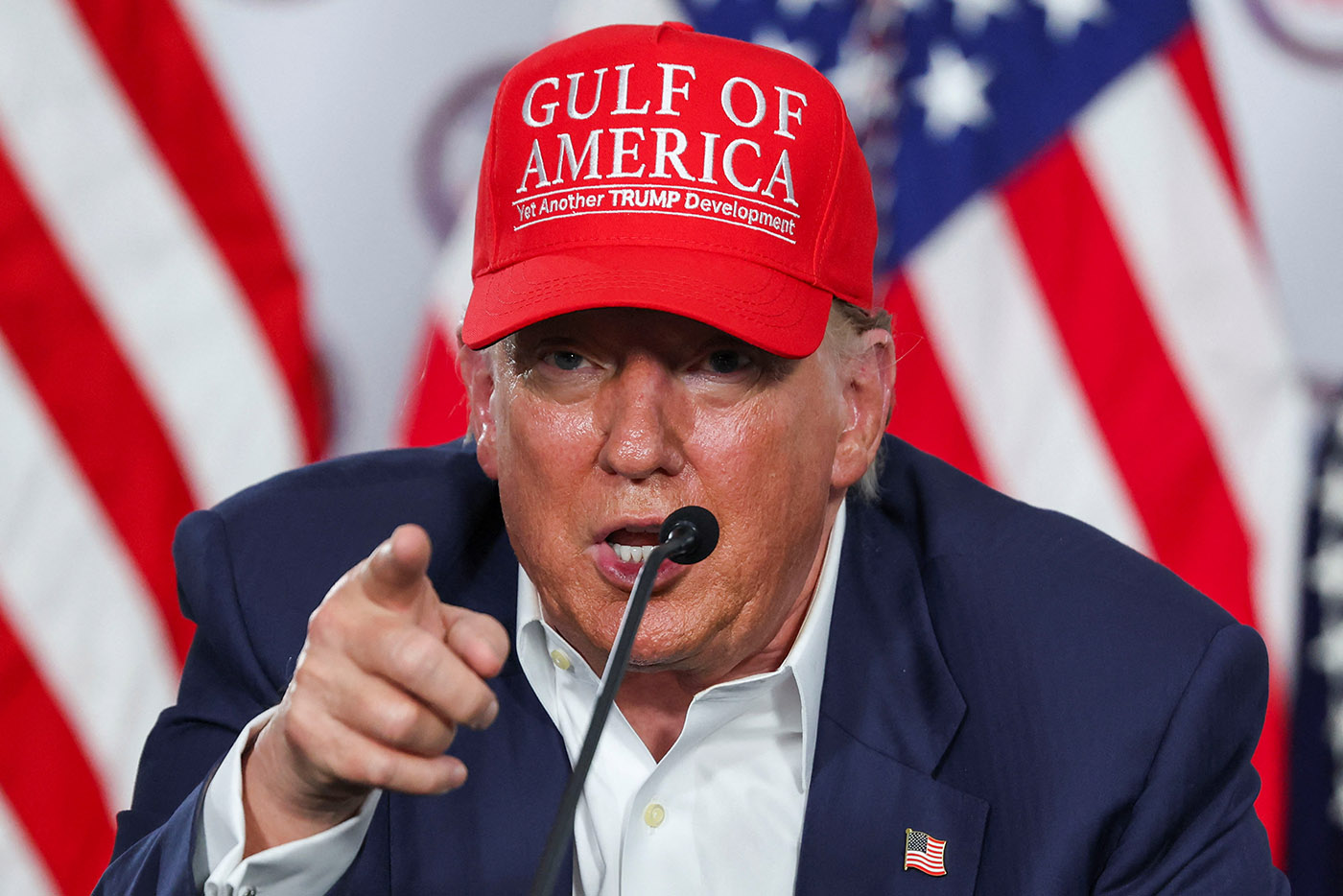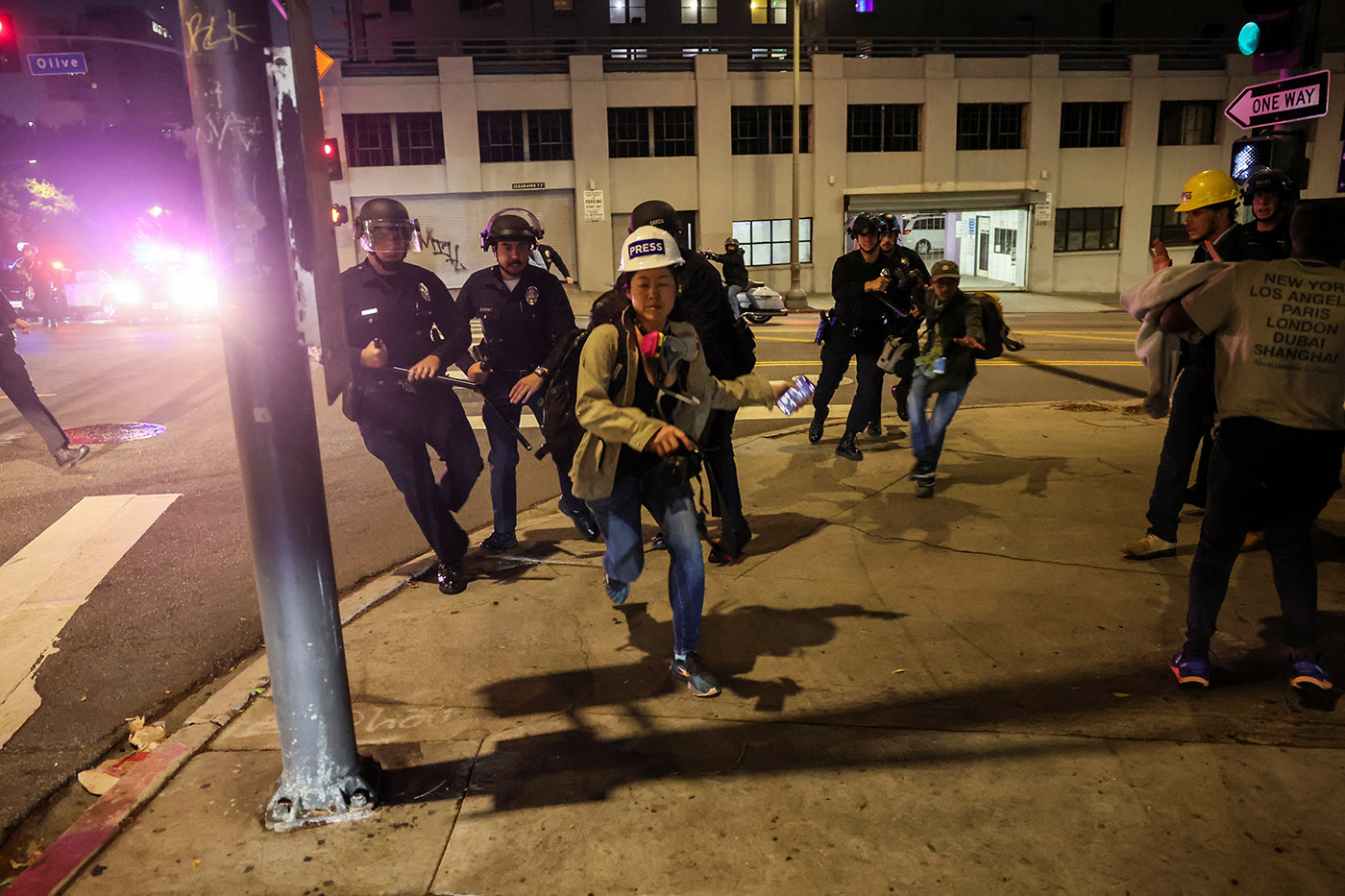Millions went into the streets during the summer of 2020 to protest the killing of George Floyd, pinned under the knee of Minneapolis police officer Derek Chauvin and three other officers. Two years later, attorneys representing municipalities, police departments and state agencies around the country remain embroiled in litigation and negotiated settlements to compensate journalists and citizens who were injured by law enforcement as they documented the protests.
Those who filed lawsuits claim they were targeted, victims of excessive force and still suffer from debilitating injuries.
The attacks raise serious questions about the law enforcement response in handling protests against police brutality and the chilling effect of that violent backlash. Nine days after Floyd’s death, the American Civil Liberties Union posted a story characterizing the attacks on journalists as a “full-scale assault on the First Amendment freedom of the press.”
As the attacks added up, so did the lawsuits filed on behalf of the media. U.S. Press Freedom Tracker, an open-source database of press freedom incidents, reported at the two-year mark following Floyd’s death that at least 50 journalists covering the protests had filed First Amendment lawsuits against law enforcement.
Minneapolis freelancer Jared Goyette and seven other journalist plaintiffs filed one of the first such lawsuits, against the Minneapolis Police Department and the Minnesota State Patrol, (MSP). The first sentence of the class-action complaint Jared Goyette v. City of Minneapolis says: “The press is under assault in our city.”
The complaint references specific instances of repeated harassment and violent behavior. “Despite Governor Walz’s assurances that the role of the media would be fostered and respected, the MPD, State Patrol, and other law enforcement authorities continued to target and intimidate members of the news media in a concerted effort to chill protected First Amendment activity….These incidents constitute flagrant infringements on the constitutional rights of individual reporters, as well as the public’s interest in the dissemination of accurate information and accountability of government for its actions.”
On Feb. 8, 2022, the Minnesota State Patrol and the state of Minnesota settled in Goyette, et al., for journalists attacked by the agency for $825,000. The ACLU of Minnesota legal team continues negotiations with attorneys representing police for the city of Minneapolis, the Minneapolis Police Department chief, Hennepin County Sheriff’s Office and others.
Three notable and sizeable monetary settlements negotiated in 2022 share similarities: The cases of Linda Tirado and Jared Goyette, et al. (representing two separate cases) in Minneapolis and Trevor Hughes in Denver were injured in the first days of protests at the end of May 2020. In all three cases, the plaintiffs were on the streets either photographing the scene or shooting video, they had moved away from the direct line of action to protect themselves prior to being shot and their injuries stemmed from law enforcement shooting projectiles which struck their head region.
This year nearly $2 million has been paid out with numerous suits settled or ongoing in Minneapolis, Denver, Portland, Los Angeles, Washington, D.C., Oakland, Dallas and Richmond, Virginia, and that’s not the full list.
According to civil rights attorneys, the widespread repression of journalists and citizens documenting the protests was something not seen prior to the summer of 2020. The protests ignited organically in most major U.S. cities after 17-year-old Darnella Frazier posted a 10-minute video on Facebook showing the police action against Floyd.
But nowhere was it as volatile for journalists than in Minneapolis. Teresa Nelson is the legal director at the ACLU of Minnesota and is at the forefront as an attorney involved with multiple complaints filed on behalf of journalists against Minneapolis police, Minnesota State Patrol, the Minnesota Department of Public Safety commissioner and Hennepin County.
“There’s a difference between police reacting to general protesters versus police reacting to media covering police violence. If you are able to silence the journalists, it silences the narrative,” Nelson said.
Portland, Oregon, was another flashpoint during the Floyd protests with more than 100 days of street clashes and chaotic scenes between protest crowds and law enforcement. There were multiple lawsuits filed on behalf of aggrieved journalists who claimed law enforcement personnel were overly aggressive and violated their First Amendment rights.
In the United States District Court for the District of Oregon, U.S. District Court Judge Michael Simon noted that federal troops from the Department of Homeland Security and the U.S. Marshals Service were sent in, allegedly to lower the temperature, and did just the opposite.
In his opinion lifting an earlier restraining order against law enforcement in the Index Newspapers, LLC v. City of Oregon lawsuit, Judge Simon wrote: “The then-administration responded to those protests with an unusual show of violence and chose Portland as one of the cities at which to make an example of the federal government’s show of force and attitude toward journalists and legal observers. The federal officers moved well beyond federal property and dispersed protesters, journalists, and legal observers from City streets, sidewalks, and parks.”
As legal director of the ACLU of Oregon, Kelly Simon, no relation, filed lawsuits on behalf of numerous media plaintiffs against the City of Portland and the Portland Bureau of Police during the 2020 protests. Simon believes the increase in documenting law enforcement methods triggered the officers’ hostility against those who were reporting and recording what occurred.
“And so with that increased transparency, I want to believe that there will be increased accountability. And I don’t think law enforcement wants to be held accountable. And I think that increase in transparency is one of the catalysts for the backlash we’re seeing from law enforcement in that the press is such a strong and important symbol of that transparency that can lead to accountability,” Simon says.
Among the 2022 Top Three settlements: Those who were injured and their lives now/
On May 29, 2020, Linda Tirado, a freelance journalist, photographer and author, was photographing the George Floyd protests in Minneapolis. The injuries she suffered that day included permanent blindness in her left eye. From her testimony delivered to the U.S. House of Representatives Committee on Oversight and Reform Subcommittee on Civil Rights and Civil Liberties one month after being shot, Tirado said she recalled lining up to make a photo, and then experiencing pain and wetness. “I registered a dull thud and realized I had been hit in the face with something; my goggles came off and tear gas hit my eyes. I realized I was bleeding. I squeezed my eyes shut and started instinctively screaming “Press! I’m press!” hoping that would protect me.
On May 26, 2022, she received a $600,000 settlement from the Minneapolis City Council.
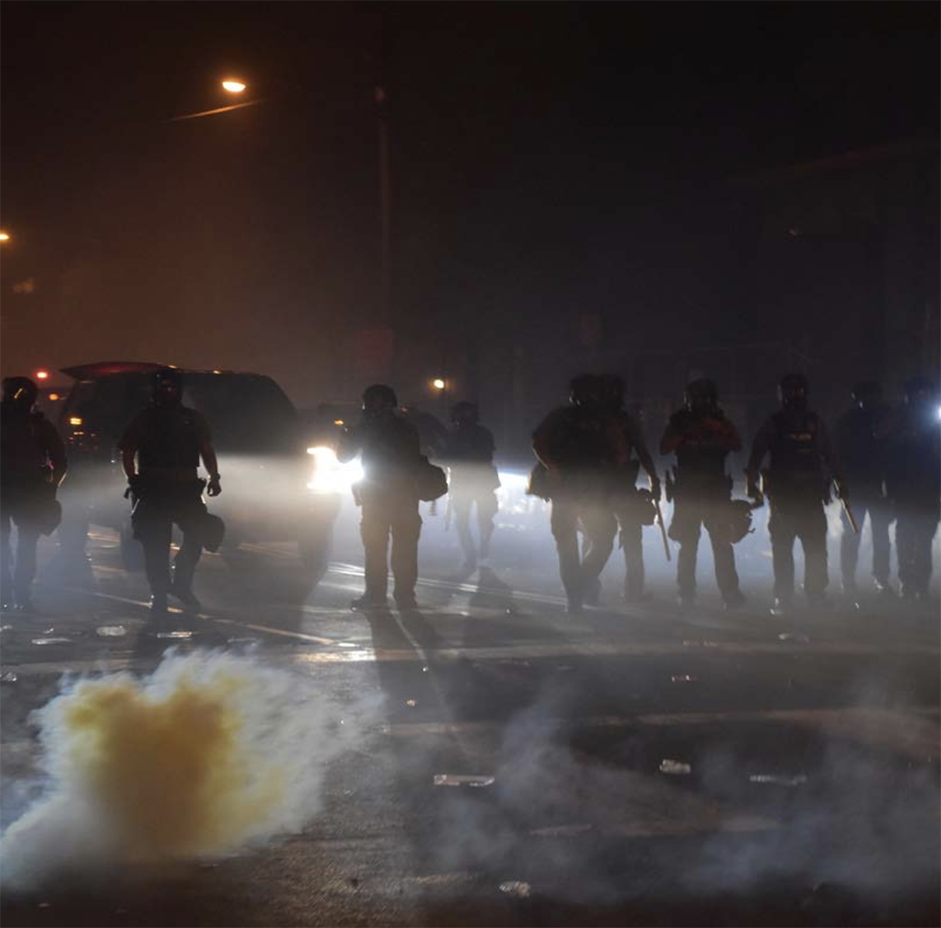
A photo taken by journalist Linda Tirado showing Minneapolis police officers in a line during a lull in the protests near the Fifth Precinct police station in Minneapolis prior to being shot in the eye and permanently blinded May 29, 2020. (Photo courtesy of Linda Tirado)
In an opinion denying the City of Minneapolis’s motion to dismiss Tirado’s lawsuit, U.S. District Court Chief Judge John R. Tunheim of the United States District Court for the District of Minnesota characterized the police targeting of Tirado as serious, troubling and “seemingly unjustified.”
Chief Judge Tunheim wrote: “Two photos taken by Tirado moments before the officer(s) shot the foam bullet(s) show police aiming 40mm launchers toward Tirado, despite allegedly being identifiable as press and being some distance away from police at the time…Plaintiff Tirado’s experience as a journalist during the George Floyd protests and her injuries are serious and troubling. That numerous other journalists experienced similar, seemingly unjustified incidents involving less-lethal munitions and other measures is even more troubling, as the allegations plausibly suggest an unconstitutional custom carried out by MPD (Minneapolis Police Department) officers of targeting journalists for unlawful reprisals. Although the alleged custom is time-bound to a single police operation surrounding the George Floyd protests, the City cannot escape municipal liability if a plaintiff can plausibly allege that it was deliberately indifferent to widespread, consistent, unlawful use of force against the press.”
Attorneys representing the city of Minneapolis as well as the Minneapolis chief of police denied there was a pattern of attacks against the press. The city attorney’s motion to dismiss stated, “The Amended Complaint does not contain sufficient facts to establish that the City Defendants had a custom of targeting members of the press or protestors with projectiles.”
Tirado says the year following the shooting was spent in recovery and “learning to be half-blind.“
Tirado refrained from writing during the two-year period from the date she was injured to the completion of a settlement agreement as she feared the legal process of discovery in which she could be asked for every email, every Signal chat, or every written note related to the event. “For a writer trying to deal with trauma, not to be writing” she explains, was worse than the injury itself so she and her legal team agreed to settle.
No settlement money went toward legal fees as attorney Tai-Heng Cheng, a law partner and co-head of the Global Arbitration, Trade and Advocacy practice with Sidley Austin LLP, provided pro-bono legal assistance. However, Tirado estimates that it will cost more than $2 million “in the course of my lifetime” or less than that, she says if she doesn’t need a seeing-eye dog.”
She says she was clearly identifiable as press, with a press badge around her neck, and carried a Nikon camera with a flash attachment. She was photographing the Minneapolis police – not intermingled with the protesters but in front of them and photographing the police for 10 minutes prior to the shooting.
Asked what the lasting effects of the shooting are, she says it “changes you irreparably. I still bump into things and haven’t figured out how to move around in the world.”
“I hate that they’ve taken me off the field (of conflict stories)” after two decades as an author and freelance journalist covering social issue protests.
_______________
Journalist Jared Goyette was the lead plaintiff in the $825,000-shared settlement Feb. 28, 2022, from the Minnesota State Patrol and the state of Minnesota along with seven other journalists and the Communication Workers of America. A journalist for more than a decade when the shooting occurred, Goyette was on assignment in Minneapolis on May 27, 2020, with The Washington Post and was struck by a projectile round on the bridge of his nose.
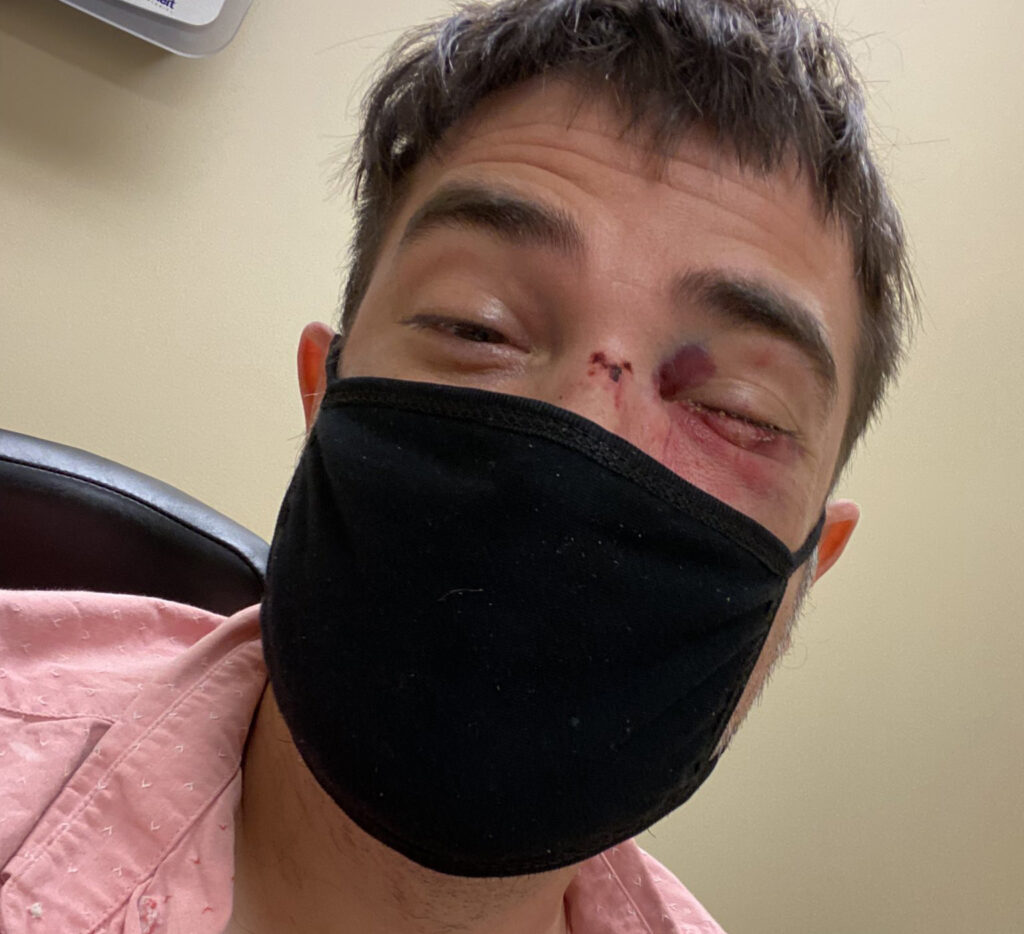
Journalist Jared Goyette was struck by a “less-lethal” ballistic ammunition round on the bridge of his nose while covering the George Floyd protests in Minneapolis May 27, 2020. (Photo courtesy of Jared Goyette)
Part of the impetus for Goyette to be part of the lawsuit was “I was hoping to find out what happened and why,” he said.
“There are scenarios as a journalist where you understand that you’re potentially putting yourself in danger,” he told First Amendment Watch. “This was not that case.”
He says at the moment of the shooting it was still light out at 5 or 6 p.m. and he was off by himself on his phone texting his 10-year-old daughter that he was OK. He says she was worried about him. That’s when he was struck with a “less-lethal” ballistic ammunition round. He says the motion of looking down at his phone to text probably saved him from greater injury as he says the projectile might have hit his eye rather than his nose.
“History was happening and as a journalist, I didn’t want to stop working and I didn’t want that (the injury) to be the reason that I stopped working.” he said. Later on, he understood that he had paid a price physically and mentally by continuing to cover the protests.
________________
Trevor Hughes, a Denver-based portrait photographer, was shot in the right hand May 31, 2020, while shooting video during the George Floyd protests downtown. On Oct. 13, 2022, the city of Denver approved the payment of $350,000 from its “liability claims” fund to compensate Hughes. Others including Jefferson County and the municipalities of Arvada and Golden, Colorado, chipped in with additional compensation which brought the total to $485,000, as it was unclear which law enforcement officer was directly responsible for the shooting.
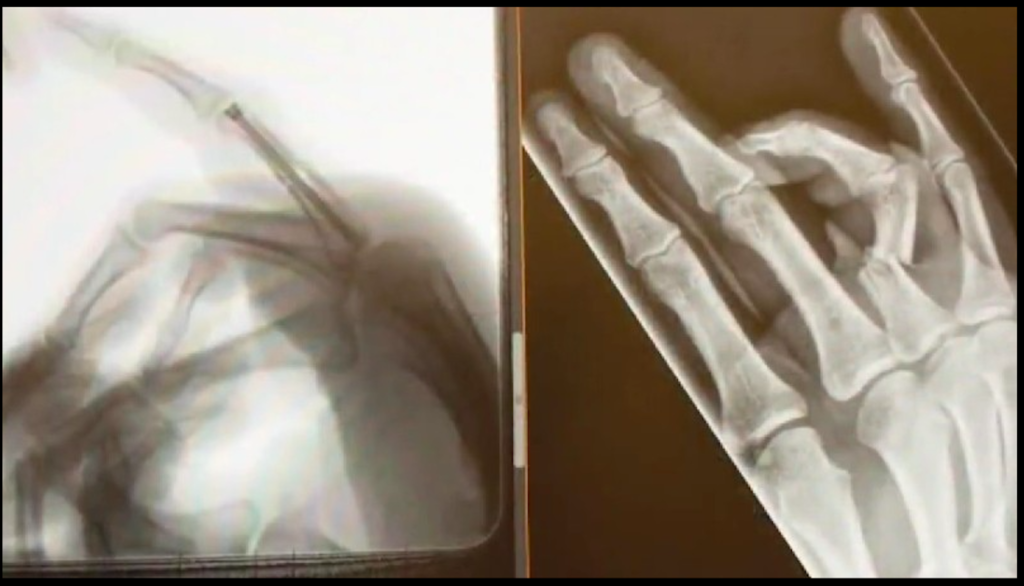
Two X-ray images of Trevor Hughes’ right hand. (Exhibit evidence courtesy of Killmer, Lane & Newman, LLP)
Hughes believed he had moved away from the protest chaos to a protected area at the moment he was hit. He was recording video but had moved to the side “as all hell was breaking loose. Basically, the police started just unloading into the crowd. I thought it was really important to be videoing what the police were doing. Because I just thought people needed to see this, you know?”
Hughes’ attorney, Andy McNulty, filed a complaint in United States District Court for the District of Colorado which claimed a “Kinetic Impact Projectile,” otherwise known as a rubber or plastic bullet was fired directly at Mr. Hughes’ head as he was holding a camera at eye level. The force of the bullet destroyed the camera and knocked it out of his hand. The bullet struck the ring finger of his right hand. His finger broke and was dangling from his hand by a piece of skin.
McNulty, a civil rights lawyer at Killmer, Lane & Newman, LLP, in Denver, says the $485,000 settlement doesn’t “compensate Trevor completely and fully for the rest of his life for what happened… You know, there’s been no shame from the administration about what happened. You know, there’s been no mea culpa. There’s been no public acknowledgement that we did things wrong, horribly wrong. There have been, I think, three officers who have been disciplined for the entirety of what happened during these protests, and they’ve been given a total of maybe three weeks of vacation.
“The problem with these cases, and it’s a systemic problem, is that the police have so many protections, including qualified immunity, and other sorts of immunities that make these cases much more difficult to litigate,” McNulty told First Amendment Watch.
Qualified immunity shields government actors from being sued unless their conduct violates a clearly established constitutional or statutory right that any reasonable person would have known.
Hughes opened a photo studio in downtown Denver six months prior to the protests. He says his injury, in combination with the pandemic, contributed to its closure. And photojournalism is not an avenue Hughes plans to pursue following his injury. But even after everything he’s been through, he feels thankful.
“One of the things that I’ve kind of thought about recently, when I was going and doing some of the court stuff and dealing with lawyers and the law part of the lawsuit I was just like, you know, I feel so grateful that this is all here. And that seems like there’s some justice maybe that can happen.”
Tirado v. City of Minneapolis_United States District Court, District of Minnesota
Index Newspapers LLC v. City of Portland
Tags

